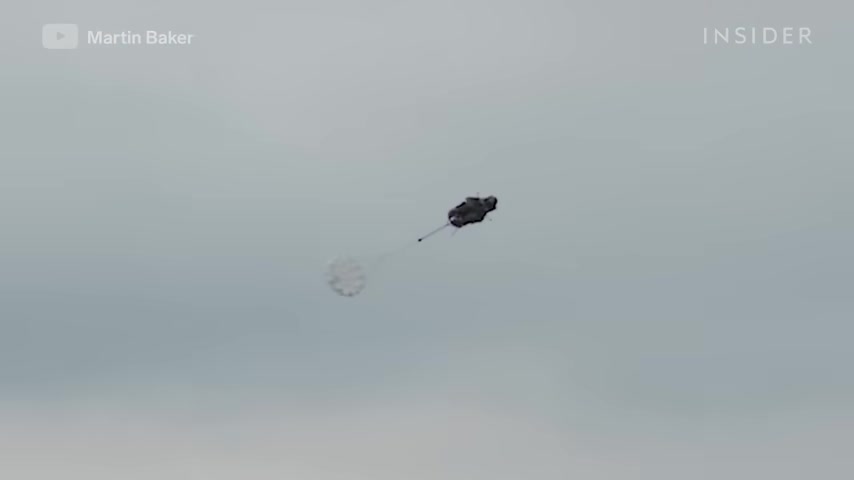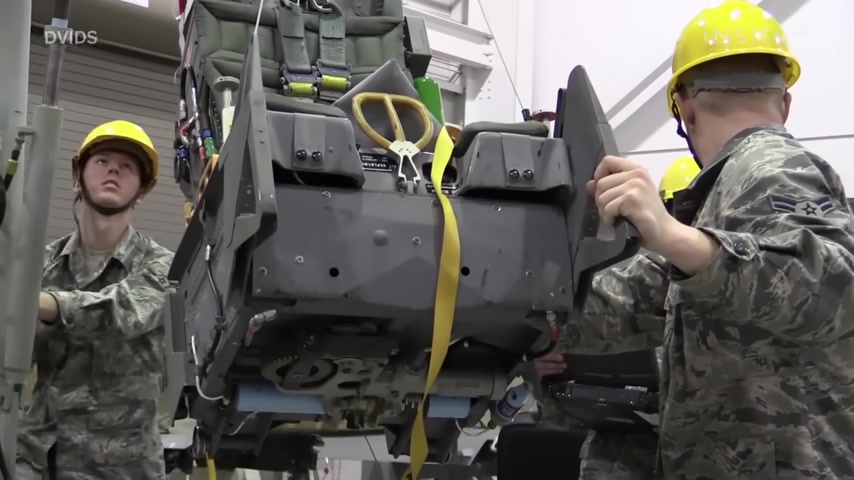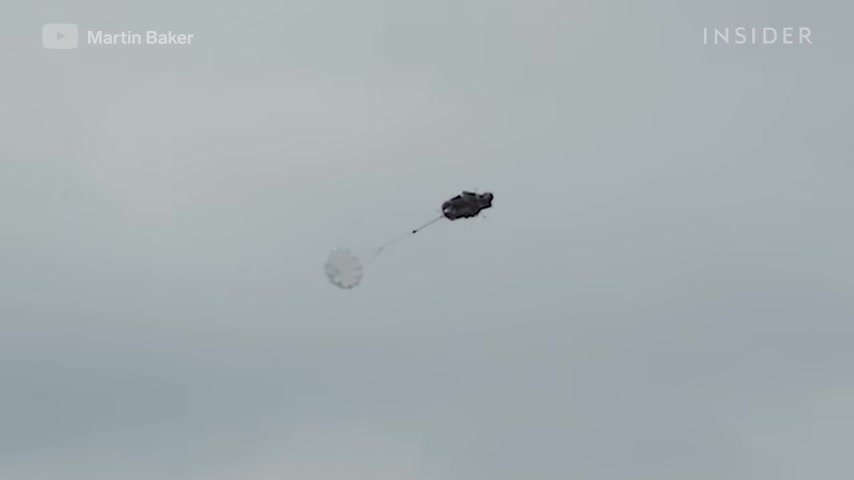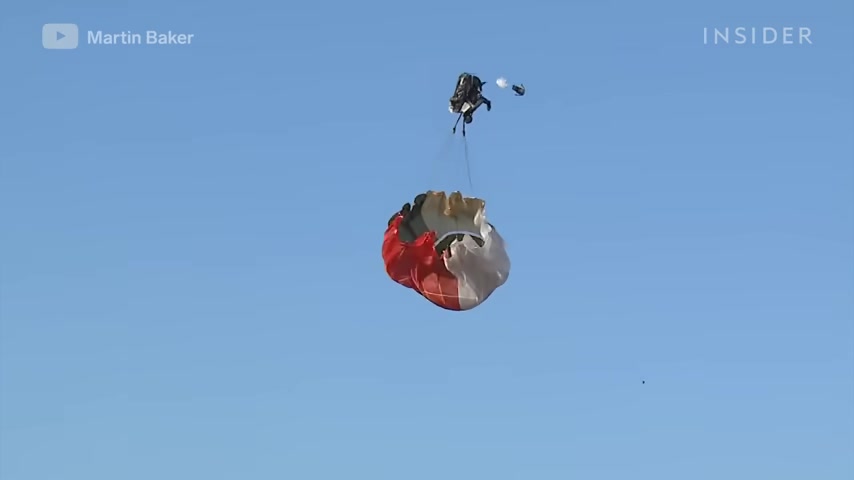https://www.youtube.com/watch?v=x1IhlU1qFN4
The Death-Defying Mechanics of Fighter Jet Ejections _ Cars Insider

So I waited till about 2000 ft , which is where I pulled the pull the handle and I had about a less than a second left to live .
That's Lieutenant Colonel Pete Smith , an air force veteran who spent his 28 year military career as a fighter pilot and has experienced an injection firsthand in TV .
And movies , a fighter pilot ejecting from their jet comes across as a cut and dry procedure .
In reality , the process is complicated , violent and leaves most pilots with severe injuries .
About 20 to 30% of fighter pilots experience some sort of spinal fracture as a result .
But in most cases , ejection seat technology is the difference between life and death .
So how exactly does this technology work ?
And what is it like to experience an ejection ?
It is a complex question .

And , and as a matter of fact , the ejection seat is probably the most complex piece of equipment within a fighter jet as soon as you pull the handle at zero seconds .
The first thing that's gonna happen is you just send a signal to essentially start the process of ejecting this handle which sits between the pilot's legs sends an electrical impulse to the aircraft to release the bolts holding the cockpit's canopy in place a set of small rockets in the front then push the canopy up and out of the pilot's way .
Then an explosive cartridge underneath the seat goes off to catapult the pilot out of the cockpit .
This initiates the seat's rocket boosters which propel the pilot 100 to 200 ft upward .
Sensors within the seat measure the plane's speed and the ambient air pressure to determine whether the pilot is at a low altitude and the parachute needs to be deployed immediately or whether they're at a higher altitude .
And the parachute needs to be delayed until they reach thicker air .

In the latter case , the seat will still deploy a smaller chute known as a dr which helps lower the pilot's rate of descent and stabilize the seat from careening into a deadly spin .
Once the main parachute is deployed , a motor automatically fires finally releasing the pilot from the seat .
This entire process exerts 14 to 16 times the force of gravity on fighter pilots bodies .

If you have time to prepare , you want to prepare and the best thing to do in preparation for ejecting out of uh one of these with one of these seats is you want to be in position and getting in position is to try and make yourself skinny and stiff and straight because you gotta remember , this thing is gonna go up the rails , it's a catapult and it's gonna fire you up about 50 ft per second and then the rocket's gonna go off and depending on where you are and what seat you're in , it's 5 to 20 G S going up those rails and within 2 to 4 secondss , depending on what mode of flight you're in , you're gonna be , you're gonna have a full parachute .
Once you're in a full shoot , the game is not over yet .
Those are things that come into the , you know , the survival piece once you're in a shoot .
A , am I in training , am I in combat ?
And also in that is kind of an awareness of what you can expect .
Am I in the Himalayas with mountains at 20,000 ft ?

I might have to do that man's seat separation on my own in 2007 had a harrowing experience while practicing a high risk flight maneuver during training off the coast of Florida .
So essentially I was low and high speed .
I was spatially disoriented .
We were fighting over the water at night and I essentially had rolled this thing inverted and didn't even notice from the visual cues outside that that's what happened to me passing 6000 ft .
I made the decision to continue .
We're supposed to get out if we're out of control at 6000 ft , but I decided to hang with it and I'm trying to slow down because I was already through 600 knots .
That's an incredible speed .
600 knots is equivalent to 690 miles per hour .
Essentially , if you're above 500 knots , it's about a 90% fatality .
Either you're gonna get some kind of failing injuries or you could snap the neck or you can , there's lots of things that can go wrong at that high speed .
The slower , the better 100 and 80 knots is like the perfect speed .

So I waited till about 2000 ft , which is where I pulled the handle and I had about a less than a second left to live .
I went out around 400 miles an hour .
And for me , what I will say about any ejection .
I don't care how slow or how fast or how it's extremely violent to this day .
I can remember my body position when I went out because it snapped me back to the right .
It was taking the air out of my lungs .
So it was like you fell out of a tree and got the wind knocked out of you type of thing .
The whole thing was less than nine seconds from recognition to in the water .
For me , I was about 60 miles off shore , but it was pitch black out and I couldn't even see my hand in front of my face .
I did have injuries but you don't know it because you have so much adrenaline pumping through your body .

It wasn't until after being rescued about an hour later by a navy helicopter that Smith would discover he had herniated discs in his neck and back as well as a torn AC L and MC L .
Despite the physical dangers , advancements in technology have led to an average 90% survival rate in all types of ejections .
And according to Smith , the most dangerous obstacle that remains is hesitation .
The one thing that can get in the way is this , you know , and that decision , do I go now ?
Do I go later ?
Do I try to save the jet ?
That's where you , you get yourself in trouble .
You just got to know and that's why we have these rules .
You know , if something goes wrong , I can't hesitate , I gotta go , you know , you've got to be willing to pull that handle , you know what I'm saying ?
And trust it .
Are you looking for a way to reach a wider audience and get more views on your videos?
Our innovative video to text transcribing service can help you do just that.
We provide accurate transcriptions of your videos along with visual content that will help you attract new viewers and keep them engaged. Plus, our data analytics and ad campaign tools can help you monetize your content and maximize your revenue.
Let's partner up and take your video content to the next level!
Contact us today to learn more.